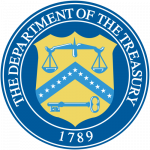Treasury Modifies SLFRF, ERA Rules to Amplify Housing Production; Announces Collaboration with Regulators Studying Insurance Cost Impact

Yesterday, the U.S. Treasury Department announced updated guidance for the State and Local Fiscal Recovery Fund (SLFRF) and the Emergency Rental Assistance (ERA2) programs authorized in the American Rescue Plan Act (ARPA), making it easier for states and local governments to use these programs to build and preserve affordable housing. Treasury Deputy Secretary Wally Adeyemo details these changes in a blog post that also celebrates the indefinite extension of the Federal Financing Bank initiative for the Federal Housing Administration – Housing Finance Agency Risk-Sharing program, announced last week by the White House. Adeyemo’s blog also publicizes a new Treasury initiative to study the impact of rising insurance costs on housing.
Treasury’s updated Frequently Asked Questions for SLFRF expands the universe of properties that would be presumptively eligible to receive SLFRF financing. Previous Treasury guidance allowed SLFRF to finance affordable housing projects that adhere to certain requirements of any of a set of federal housing programs listed in the FAQs (including HOME, the Housing Credit, the Housing Trust Fund, and others). The updated guidance expands this list of programs to also include Project Based Vouchers, Choice Neighborhoods, Section 108 Loan Guarantees, and various U.S. Department of Agriculture rural housing programs. The updated FAQs also make presumptively eligible for SLFRF any project that houses families earning up to 120 percent of area median income (AMI), as long as the project remains affordable to those households for at least 20 years. The previous FAQs provided presumptive eligibility only for projects serving households earning up to 65 percent of AMI for a minimum of 20 years. Lastly, properties are now presumptively eligible for SLFRF if they are supported by Fannie Mae or Freddie Mac and meet the needs of workers priced out of certain housing markets, in accordance with Federal Housing Finance Agency rules defining mission-driven loans for affordable housing properties. More information about the presumptive eligibility requirements is detailed in the updated FAQs.
Treasury also updated its FAQs for the ERA program, expanding the eligible uses of ERA2 funds for affordable housing production. The new FAQs add acquisition of real property and predevelopment activities, such as architectural and engineering design, planning, permitting, surveys, appraisals, and environmental review associated with an eligible project, to the list of ERA2 affordable housing production eligible activities, which already included construction, rehabilitation, preservation, and operating costs associated with ERA2-financed developments. As required by the ARPA statute, ERA2 grantees must obligate at least 75 percent of their total ERA2 funds for financial assistance, housing stability services, or eligible administrative costs before using remaining funds for affordable housing production. The statute also requires affordable housing produced with ERA2 to serve very low-income households, though costs can be proportionally allocated in projects in which some units are available to households earning more than 50 percent of AMI.
Adeyemo’s blog post also announces Treasury is working with federal and state regulators studying increases in insurance costs and decreases in coverage to better understand their impact on housing supply across the nation. Adeyemo notes Treasury currently lacks data about which areas of the country are hardest hit by insurance cost volatility and the extent to which insurers are pulling back from some markets. Treasury will look at insurance issues faced by both homeowners and multifamily rental housing and coordinate its work with state insurance regulators.

